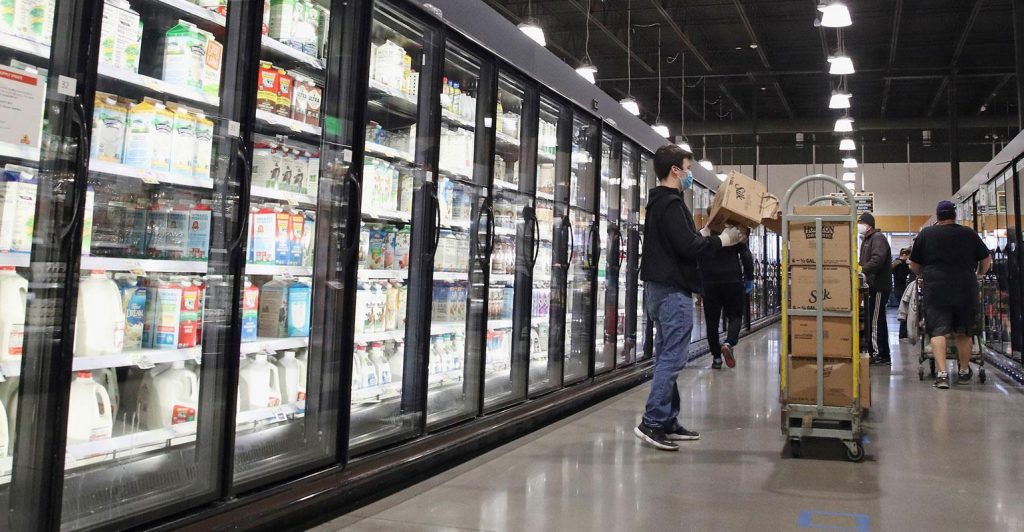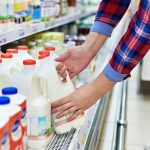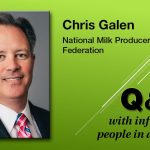
What a difference a month makes for dairy. Prices collapsed in the span of a few weeks in March and April. Now, Class III June futures are trading at over $20 on the Chicago Mercantile Exchange.
“We went from worst to first in the course of seven to eight weeks,” said Phil Plourd of Blimling and Associates, a dairy consulting firm in Madison, Wisc.
Speaking during a recent Cornell Pro-Dairy webinar, Plourd talked about the rollercoaster ride dairy commodities have been on and what kind of impact this could have on milk prices down the road.
On April 17, nonfat dry milk, butter and block cheese were three of the worst performing commodities on the market; only crude oil was worse.
“Things were looking pretty grim in the dairy markets,” he said.
Fast forward to June 5: Barrel cheddar prices were up 40% from a year ago, block cheddar was up 35% and dry whey was up 10%. Even butter, which was down 40% in April from a year ago, was just about even from the year before on June 5.
“This is the most volatile period we’ve ever seen in the dairy markets, at least in the 20 years I’ve been involved,” he said.
So, why the turmoil? It starts and ends with consumer demand and the supply chain.
Plourd said that before the pandemic hit, consumers were spending about the same time eating out at restaurants as they were eating in. In some months, consumers spent more time eating out.
Then the pandemic hit. Restaurants and schools were shut down and supply chains that couldn’t move product fast enough had too much dairy product on their hands. Grocery store sales skyrocketed as people panicked and bought lots of milk and cheese at stores, but the stores couldn’t get product from suppliers fast enough.
Since the pandemic hit, Plourd said grocery store sales have been up around 20% over last year.
According to industry estimates, retail sales account for 66% of the overall fluid market, while retail accounts for 42% of the cheese market and 45% of the butter market.
At the same time, restaurant sales plummeted 67% and sales to schools were nonexistent. Food service accounts for 15% of fluid milk sales, 48% of cheese sales and 45% of butter sales. Institutional sales account for 19% of fluid milk sales, and 10% each of cheese and butter.
Since the worst of the crisis hit, restaurant sales have rebounded, down 33% from last year but much better than when the crisis hit. At the same time, government purchases of dairy products that have helped reduce inventory and exports, already booked in March when prices were low, have gone up.
“You had these multiple layers of increased demand that have come up at once,” he said.
And, according to data, people seem content with cooking and eating at home more, at least for the short term.
Grocery sales of fluid milk are up 10%, butter up 50%, cheese up 30% and ice cream up 20% over last year, Plourd said.
A Bank of America survey just last week showed 32% of people still plan on cooking more from home even as restaurants start opening. That’s only 1 percentage point lower than May.
Back to reality
As the old saying goes, nothing lasts forever. Plourd said that block cheddar prices have started coming down from their highs along with block cheddar.
He’s predicting consistent Class prices for the summer and fall as grocery sales will likely decrease and restaurant sales will pick up. But there are lots of questions regarding schools reopening, a potential COVID-19 resurgence and possible intervention to lower virus cases.
“October price right now is not wildly priced. It’s really day to day. It will be hard to lock down totally again,” he said. “Still some noise I see, but not as bad.”
With more people out of work and less money in people’s pockets, stores are likely to drop the number of items they are selling to focus on things that will sell quickly, meaning less variety of artisan cheese and cheese shreds.
One example, he said, is Wegman’s plan to cut the number of items in its store from 52,000 to 30,000 items.
High price blowback?
Plourd said that consumer blowback from agriculture getting government help while at the same time food prices going up is something to keep an eye on.
Food inflation has skyrocketed from 1% last year to just over 4% this year.
Will “going back to basics” be good for dairy? Could be. One interesting fact: Plourd said that cereal sales are up 70% over last year. Nothing goes better with cereal than milk, so that’s a good sign.
























